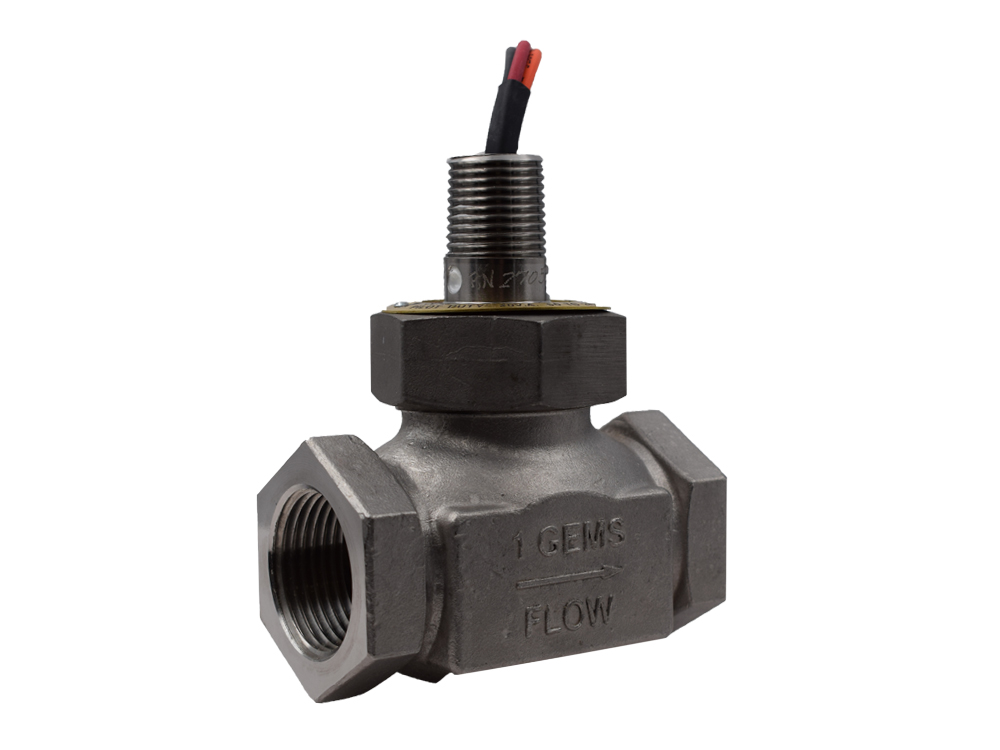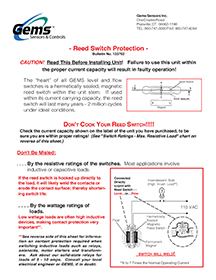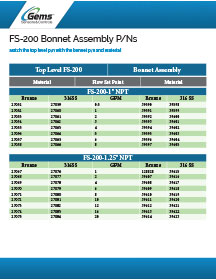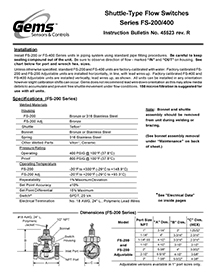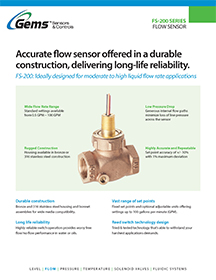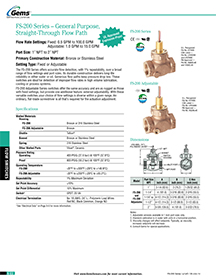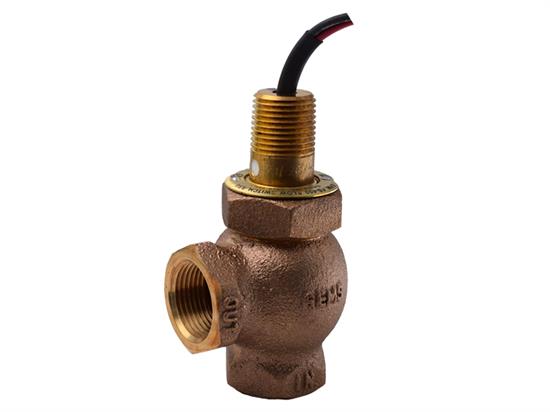Can a flow switch handle more flow than the flow set point?
A flow switch can typically handle a greater flow rate than its flow setting. Many flow switches are set 4 times less than the actual operating flow rate. As flow rate increases, pressure drop also increases, eventually causing a restriction of flow.
Can a flow switch be mounted at an angle?
Yes, piston and shuttle type switches utilizes a small, strong spring, that is not bothered by the mounting attitude of the flow switch and will perform at any orientation. The exception is our FS-400P, which is spring less.
Can a flow switch be cleaned?
Yes. The design facilitates cleaning by flushing out the flow switch with clean water. Some flow switches have removable parts for a more thorough cleaning.
If I add a small diameter connector to my flow switch, will it affect the pressure drop?
The pressure drop across the flow switch will not increase but you could see a pressure drop across the connector itself. Every flow fitting has a pressure drop associated with it.
Why is filtration necessary?
Filtration helps prevent clogging from solid particles. It is recommended but many applications do not use them. Certain flow switches are more susceptible to particles than others. A general rule to follow is the lower the set point the more susceptible to particles the unit becomes.
What is the difference between a flow switch and a flow sensor?
A flow switch detects the presence of the flow at a predetermined set point. A flow sensor is used for monitoring flow rate, telling the user the flow rate (i.e. 5 GPM).
Can flow switches be used for liquid or gas?
Yes, Gems has flow switches for liquid and gas applications. A flow switch intended for liquid flow should not be used on gas flow.
Can flow rate monitors be used for liquid or gas?
Gems flow sensors are limited to liquid flow rates. There are flow sensors available for gas measurement from other manufacturers.
Are flow switches set on the rise or the fall?
Typically, catalog units are set on the rise. Rising set points are most commonly used in coolant loops to insure proper flow. Switches can be calibrated on the fall when required.
What does SPST or SPDT switch mean?
SPST (single pole single throw) switch comes wired only one way, either normally open or normally closed. This is the best choice for OEM applications. It insures that it can only be wired one way.
SPDT (single pole double throw) switch comes wired for both normally open and normally closed. Customers like this option when prototyping and unsure of the end requirement.
What is the minimum pressure needed to operate a flow switch?
Gems will list minimum pressure requirement, this is a very conservative specification, one that is application specific. If you have been using a unit below specification without issue, it is fine to continue its use. If you have flow through the unit then you have overcome all pressure drops in your system, including the flow switches.
Does viscosity make a difference?
Yes, as viscosity increases the set points come down. Check the specifications for your flow switch for recommended maximum viscosity.
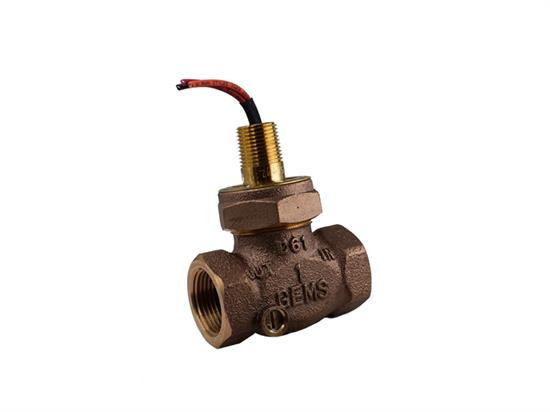
 SEARCH OUR RESOURCE CENTER
SEARCH OUR RESOURCE CENTER

